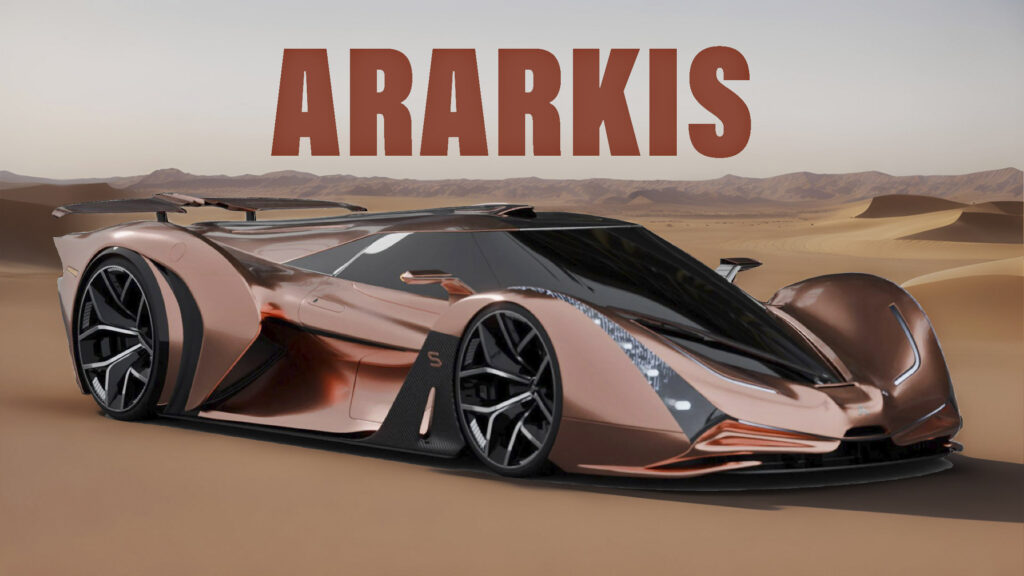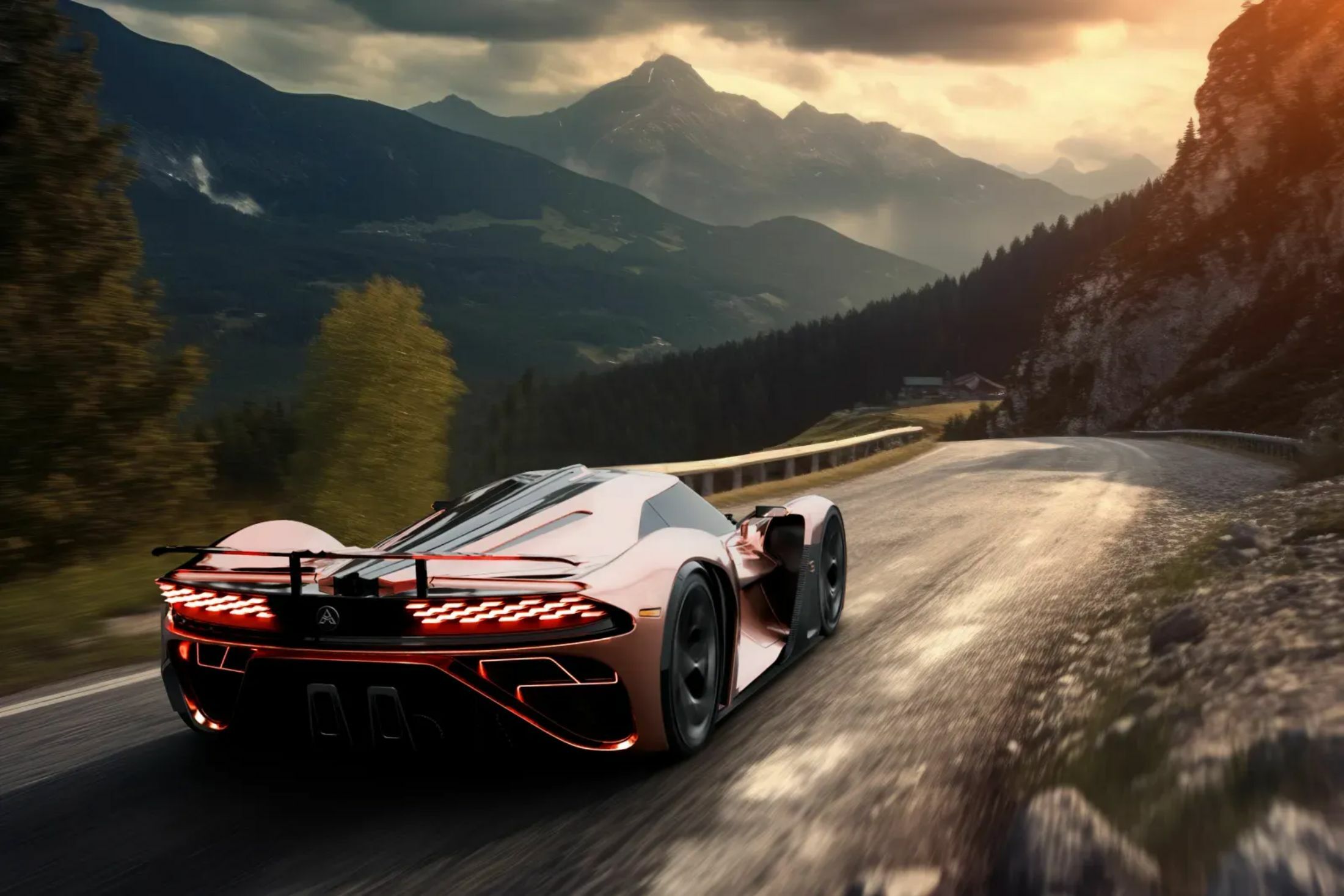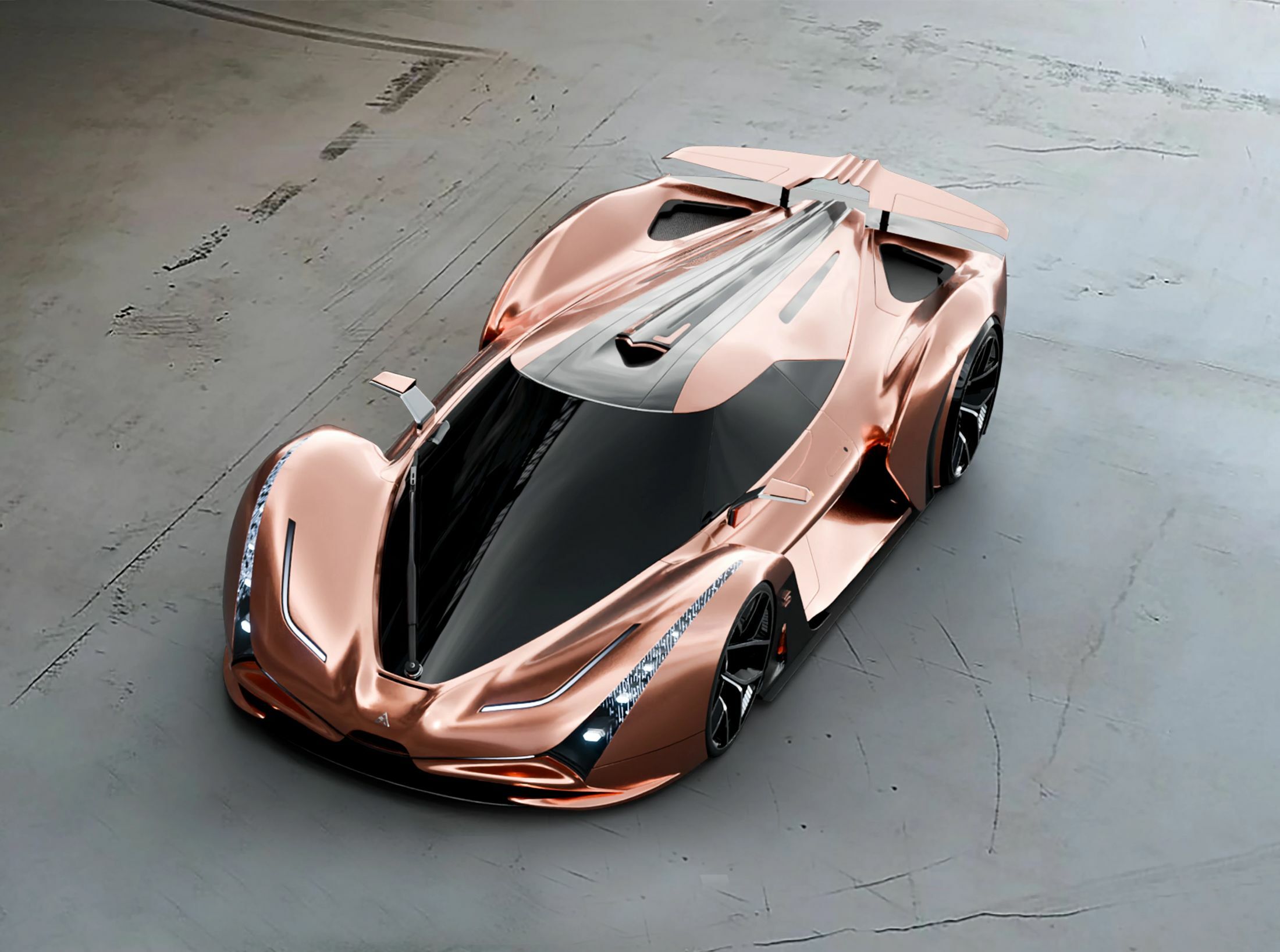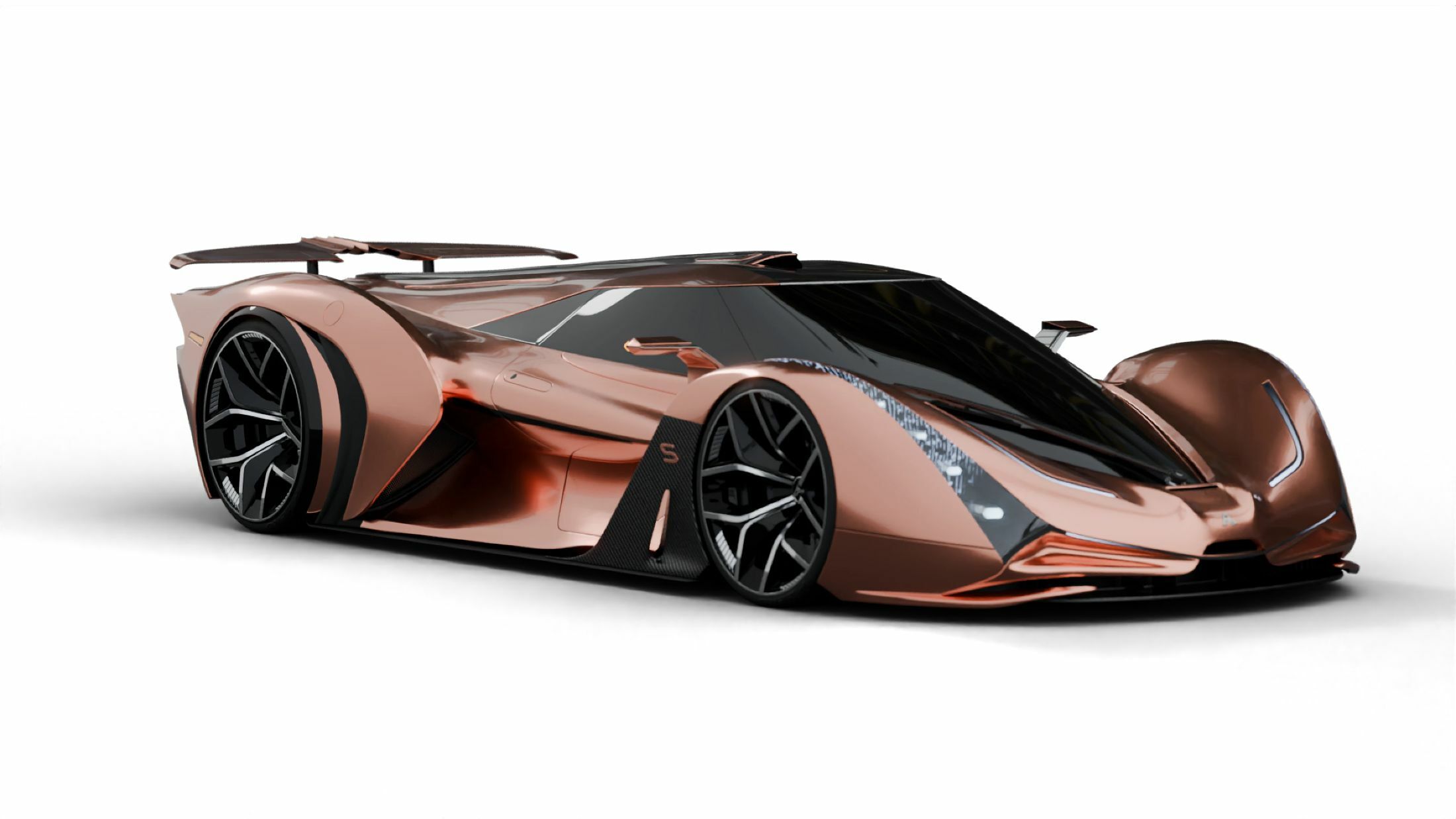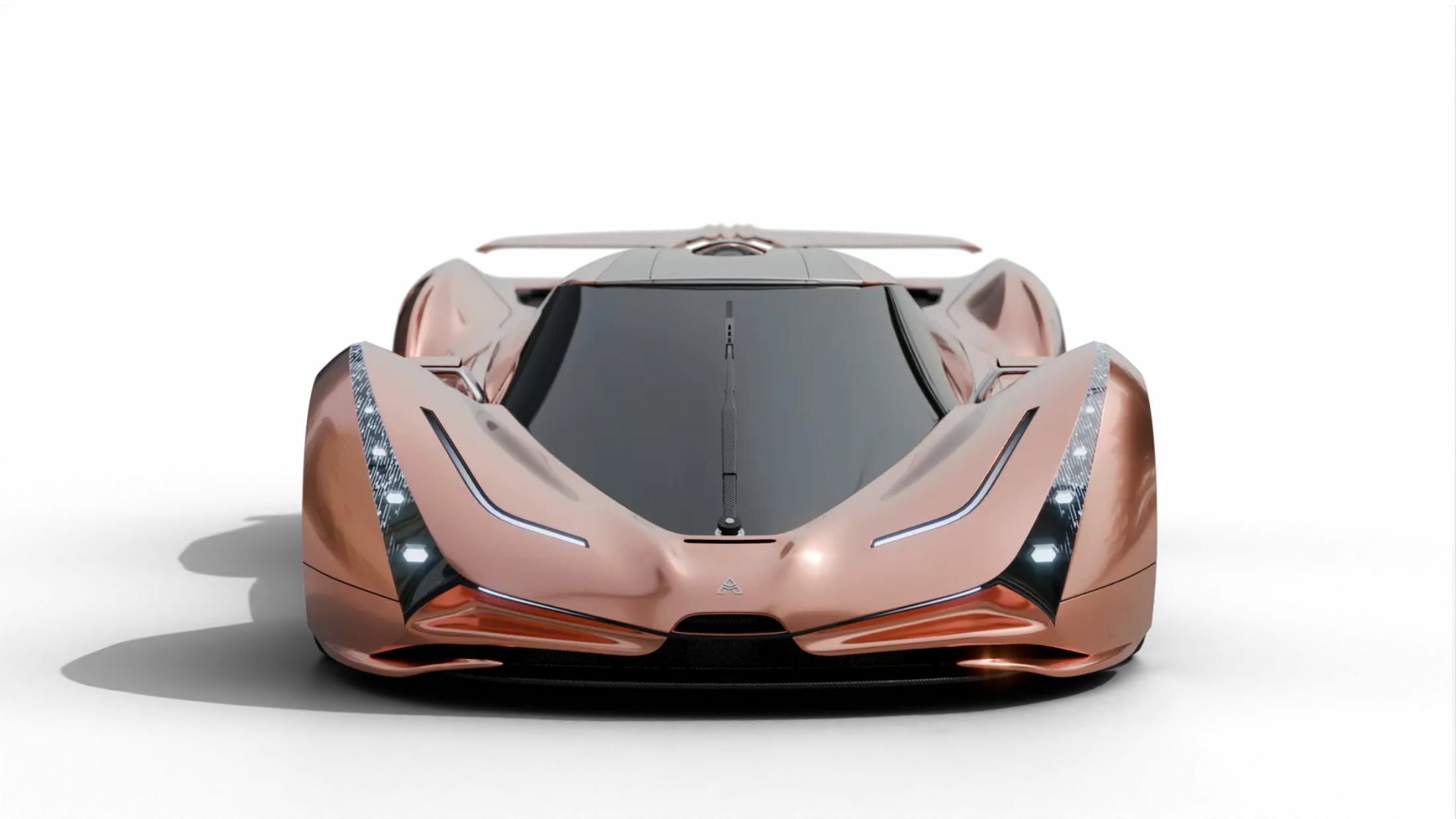Update: After we published the story, Ararkis sent us an email with a few more bits of information. They acknowledged that the Sandstorm is still in its “development phase” but shared plans for a “production prototype” that should be ready in the third quarter of 2024.
Ararkis said that they will “gladly share technical specifications of our battery, motor, and software systems as we near production” without mentioning a target date. The company added that its focus is “on sustainable performance, bespoke luxury, and the sensory innovation of Quantum Harmonix” which is described as a “potential game-changer for EV enthusiasts who miss traditional engine sound”. According to Ararkis, the elements that look like dual tailpipes in the rear diffuser are sound exits for the Quantum Harmonix system, using “acoustic technology to authentically reproduce the dynamic experience of a V12 engine”.
Behold the Sandstorm from Ararkis Automobili, the latest contender in the race of hypercars with outlandish performance claims. With a mere hint of actual existence through some flashy renderings, it aims to claim the title of the world’s fastest-accelerating production car, boasting a 0-100 km/h (62 mph) time that beats the Rimac Nevera at just 1.5 seconds.
Of course, the Nevera exists in reality while this one doesn’t — at least not yet, as Ararkis has announced plans to produce only 20 units of the Sandstorm, with prices starting at $2 million.
Don’t worry if Ararkis Automobili doesn’t ring a bell; it’s as fresh as they come. Founded by South African entrepreneur Priven Reddy and based in the UK, this startup is diving headfirst into the hypercar scene. And yes, you guessed it, their debut creation, the Sandstorm, currently resides solely in the digital realm.
More: This Pagani Huayra Replica With A Daewoo Engine Is Actually Quite Impressive
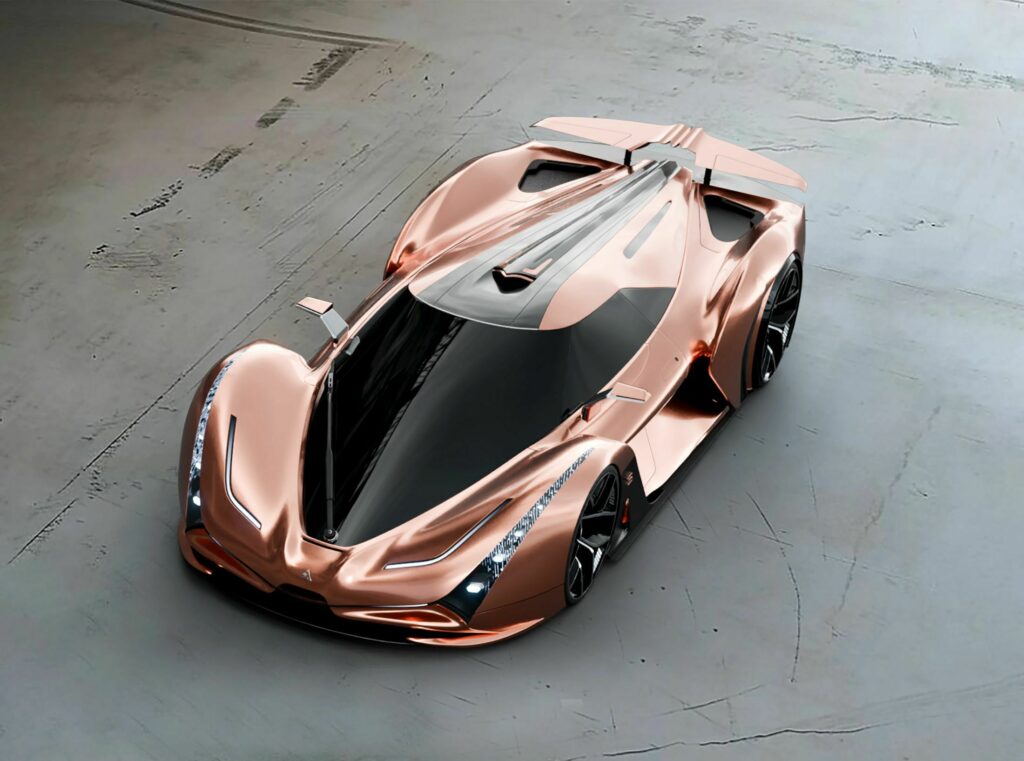
The official renderings depict a low-slung vehicle with a massive windshield. Other highlights include the sketchy-looking fender-mounted LEDs, sizable side intakes, an active rear wing, and taillights reminiscent of the Aston Martin Vulcan. Interestingly, the rear also sports two “external speakers” that look like dual exhaust pipes.
Faster Than A Sandstorm
The aspiring hypercar will ride on a bespoke chassis crafted from a blend of carbon fiber and aluminum composite materials. Under the hood, or rather under the bodywork, the Sandstorm will be propelled by “dual high-performance custom EV motors,” complemented by a “state-of-the-art single-speed” transmission. However, the specifics regarding power output and torque figures remain shrouded in mystery. According to the company, the liquid-cooled lithium-ion battery pack will boast a capacity of 115 kWh, promising an estimated range of 500 km (311 miles) and quick charging from 0 to 80 percent in just 30 minutes.
Besides the eye-catching 0-100 km/h (62 mph) acceleration figure of 1.5 seconds, the company is also targeting a top speed of 300 km/h (186 mph). This is far less impressive considering that the record-beating Rimac Nevera has a proven top speed of 412 km/h (256 mph) and can do 275.74 km/h (171.34 mph) in reverse. But hey, at least they’re keeping it real.
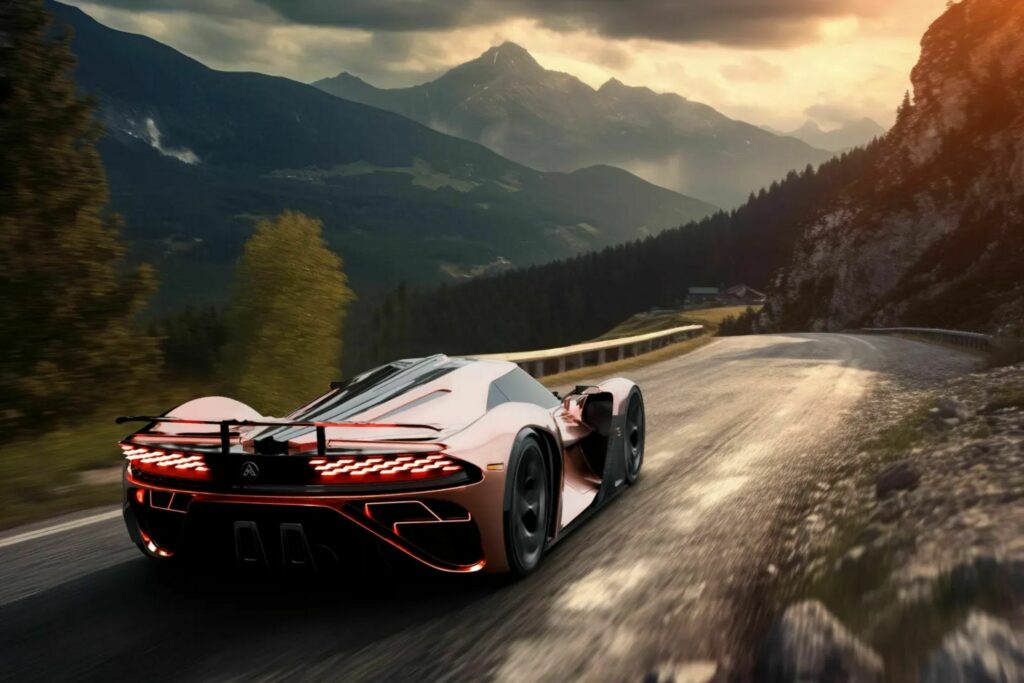
Interior Tech
Ararkis didn’t grace us with any interior renderings, but they did spill a few beans about what’s inside. The cabin is said to accommodate “a select number of occupants,” which, cryptic as it sounds, we’d venture to guess means 2 or 3 lucky souls. Regardless, the seats will boast a fancy blend of magnesium-aluminum alloy, CFRM, and Alcantara. You’ll also find a generous infotainment touchscreen paired with a thumping Bose audio system. Plus, cruise control and an around-view monitor come standard, while other advanced driver-assistance systems are still in the oven, presumably baking to perfection.
The official website doesn’t provide a target date for the model’s official launch. Judging from the rough renders, a production version appears to be distant on the horizon and would demand considerable investment in design and engineering. It remains to be seen if anyone will be willing to part with $2 million for an Ararkis instead of opting for a hypercar from established marques like Ferrari, Lamborghini, Koenigsegg, and Pagani.




